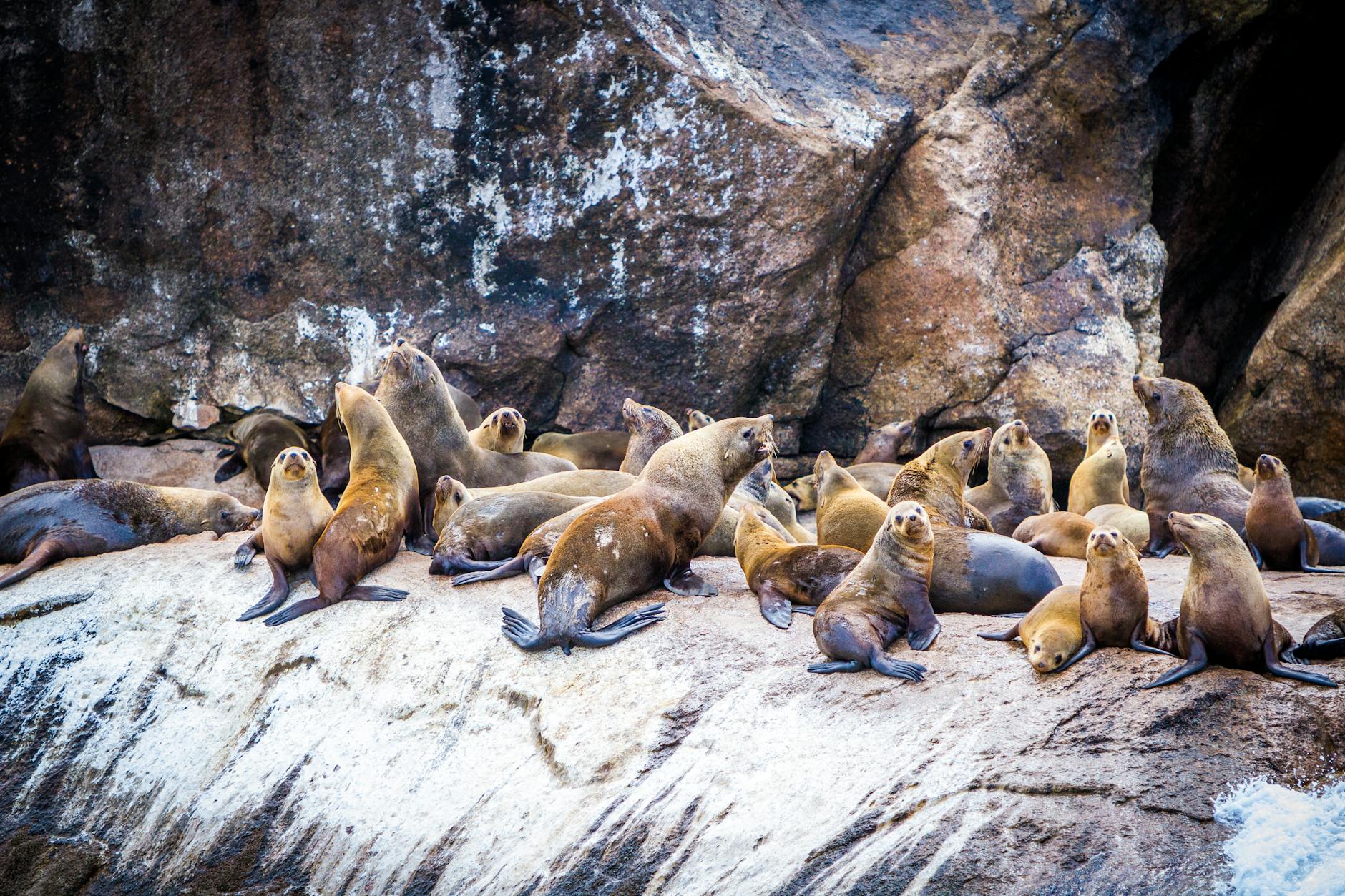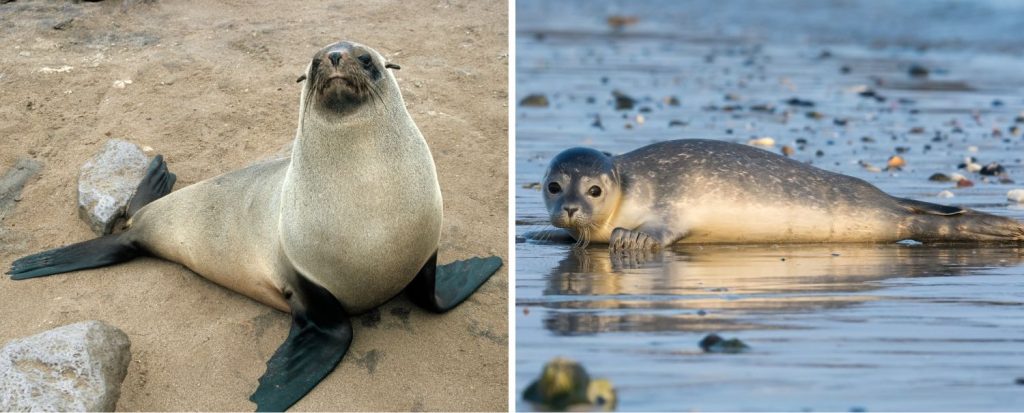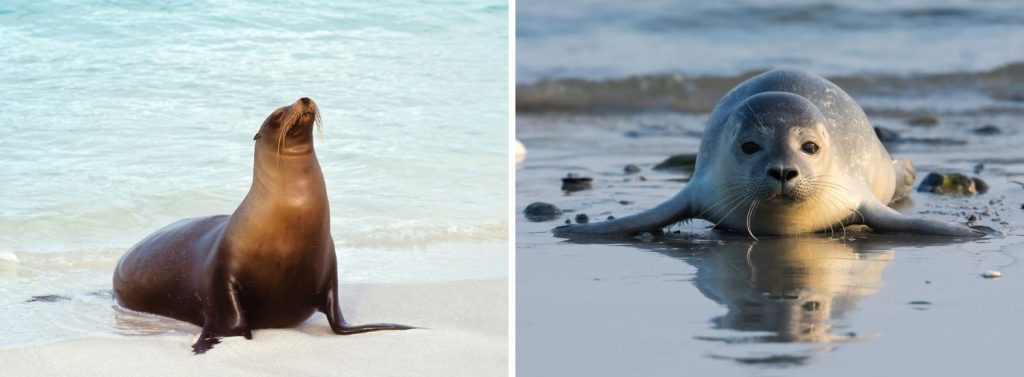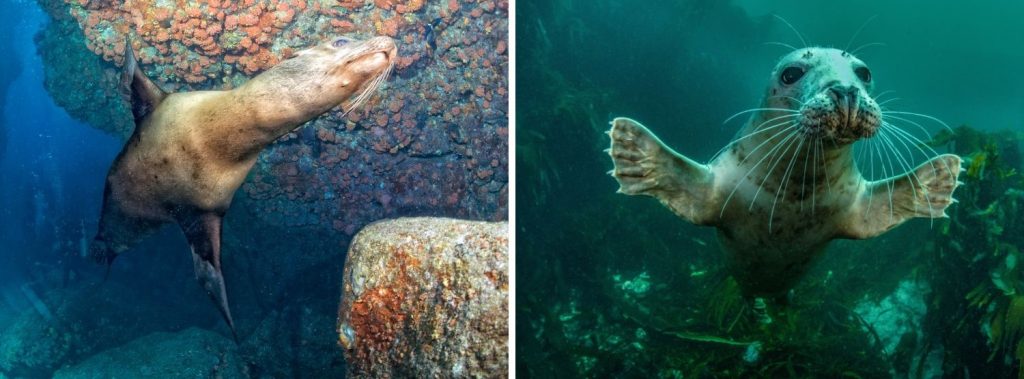
Ever stood on a rocky coastline, gazing out at a group of sleek, dark creatures lounging on the rocks, and wondered, “Are those seals or sea lions?” You’re not alone! These captivating marine mammals often get lumped together, but they actually have some pretty distinct differences. So, let’s dive into the fascinating world of pinnipeds and unravel the mystery of seals vs. sea lions!
Both seals and sea lions belong to a group of marine mammals called pinnipeds, which means “fin-footed.” This group also includes walruses. While they share a common ancestor and many adaptations for life in the water, their evolutionary paths have led to some key distinctions.
Here’s how to tell these amazing animals apart:
1. The Ear Test: Ears You Can See vs. Ears You Can’t

This is often the easiest way to tell them apart!
- Sea Lions: Have visible external ear flaps, often called pinnae. Think of them like small, rolled-up ears on the sides of their heads.
- Seals: Do not have external ear flaps. They have small ear holes, but you won’t see any protruding ears. This is why true seals are sometimes called “earless seals.”
2. Flippers for Days: Walking vs. Wiggling

Their flippers are perhaps the most significant difference in how they move both on land and in the water.
- Sea Lions: Possess large, strong front flippers that they can rotate forward. This allows them to “walk” on all fours, lifting their bodies off the ground and moving with surprising agility on land. Their hind flippers can also rotate forward, providing extra propulsion in the water.
- Seals: Have smaller, webbed front flippers that are covered in fur and cannot rotate forward. On land, seals are much less graceful; they move by “wiggling” or “bouncing” their bodies, relying on their strong abdominal muscles. Their hind flippers point backward and cannot be brought underneath their bodies, making terrestrial movement more challenging. In the water, however, these backward-pointing hind flippers are their primary propulsion, moving side-to-side like a fish’s tail.
3. The Sound Check: Barks, Roars, and Quieter Grunts
Listen closely, and you might hear another clue!
- Sea Lions: Are generally much more vocal. They communicate with a range of loud barks, roars, and even honks. If you’ve ever been to a pier or visited a sea lion colony, you’ve likely heard their boisterous calls.
- Seals: Tend to be much quieter. They typically communicate with softer grunts, growls, or chirps, especially during breeding season.
4. Body Shape and Posture: Sleek vs. Sausage-Like

Observe their overall appearance and how they hold themselves.
- Sea Lions: Tend to have more streamlined, “dog-like” heads and often appear more muscular in their upper bodies due to their powerful front flippers. When resting on land, they can prop themselves up on their front flippers, giving them a more upright posture.
- Seals: Often have a more rounded, “sausage-like” body shape. Their heads can appear more cat-like or even bear-like. When resting on land, they typically lie flat on their bellies.
A Quick Cheat Sheet:
| Feature | Sea Lions | Seals |
| External Ears | Yes (visible ear flaps) | No (small ear holes) |
| Front Flippers | Large, can rotate forward (for walking) | Small, fur-covered, cannot rotate forward |
| Hind Flippers | Can rotate forward (aid in land movement) | Point backward (primary aquatic propulsion) |
| Movement on Land | “Walk” on all fours, more agile | “Wiggle” or “bounce” on their bellies |
| Vocalization | Loud barks, roars, honks | Quieter grunts, growls, chirps |
| Body Shape | More streamlined, “dog-like” head | More rounded, “sausage-like” body, varied head |
| Resting Posture | Can prop themselves up on front flippers | Lie flat on their bellies |
Why the Differences?
These distinctions are all about adaptation. Sea lions, with their strong front flippers and ability to rotate their hind flippers, are better suited for moving around on land. This allows them to haul out onto rocky shores, piers, and even docks for breeding, resting, and escaping predators.
Seals, on the other hand, are truly built for the water. Their sleek, torpedo-shaped bodies and powerful hind flippers make them incredibly efficient swimmers and divers, allowing them to pursue fish and other prey with incredible speed and agility. Their limited mobility on land makes them more vulnerable when hauled out, so they often choose more remote or ice-covered locations.
Next time you spot one of these incredible marine creatures, armed with this knowledge, you’ll be able to impress your friends with your newfound pinniped prowess! So, happy wildlife watching!

Disclaimer: This blog post is for edutainment purposes only and may not be entirely accurate.






